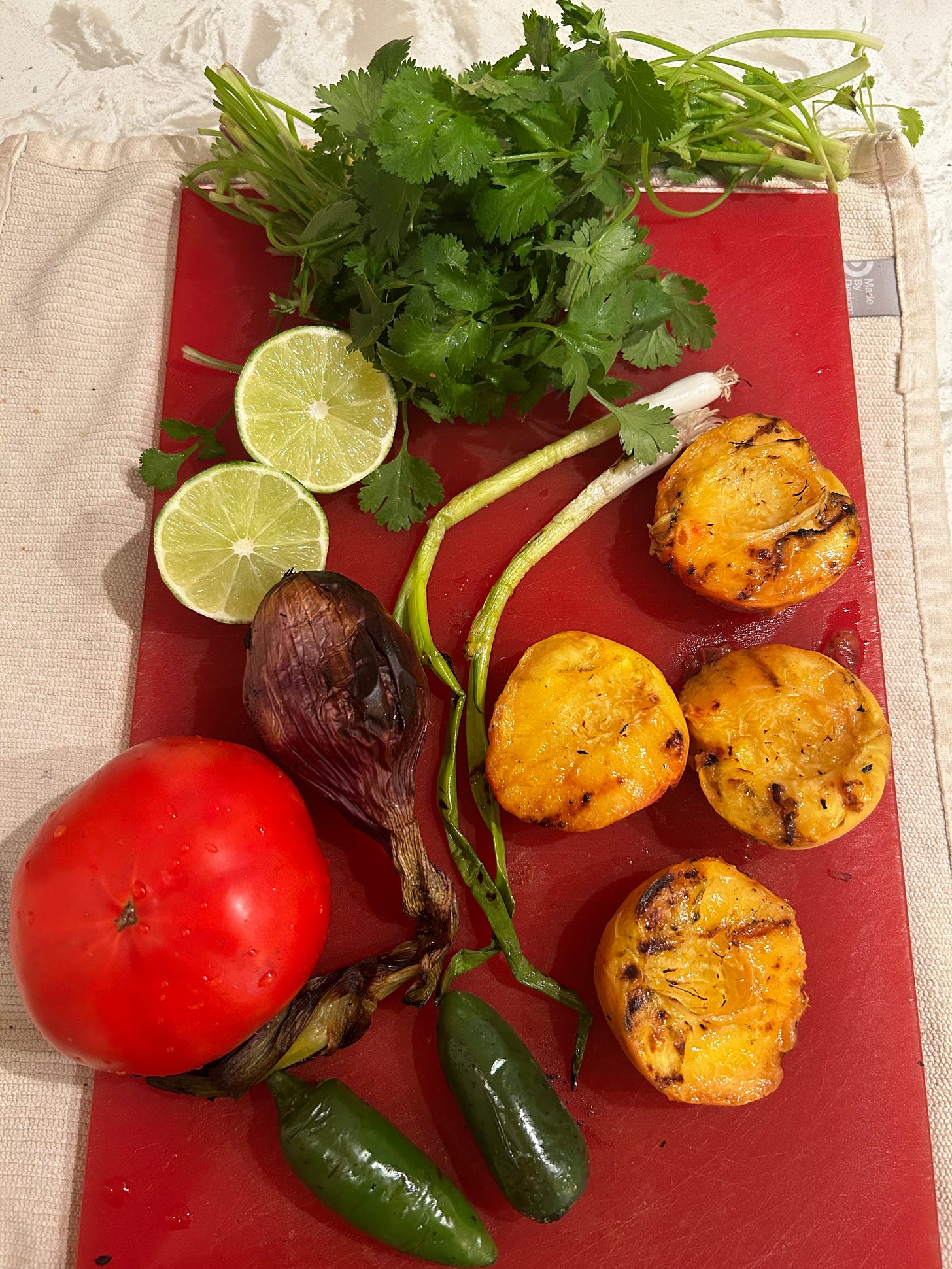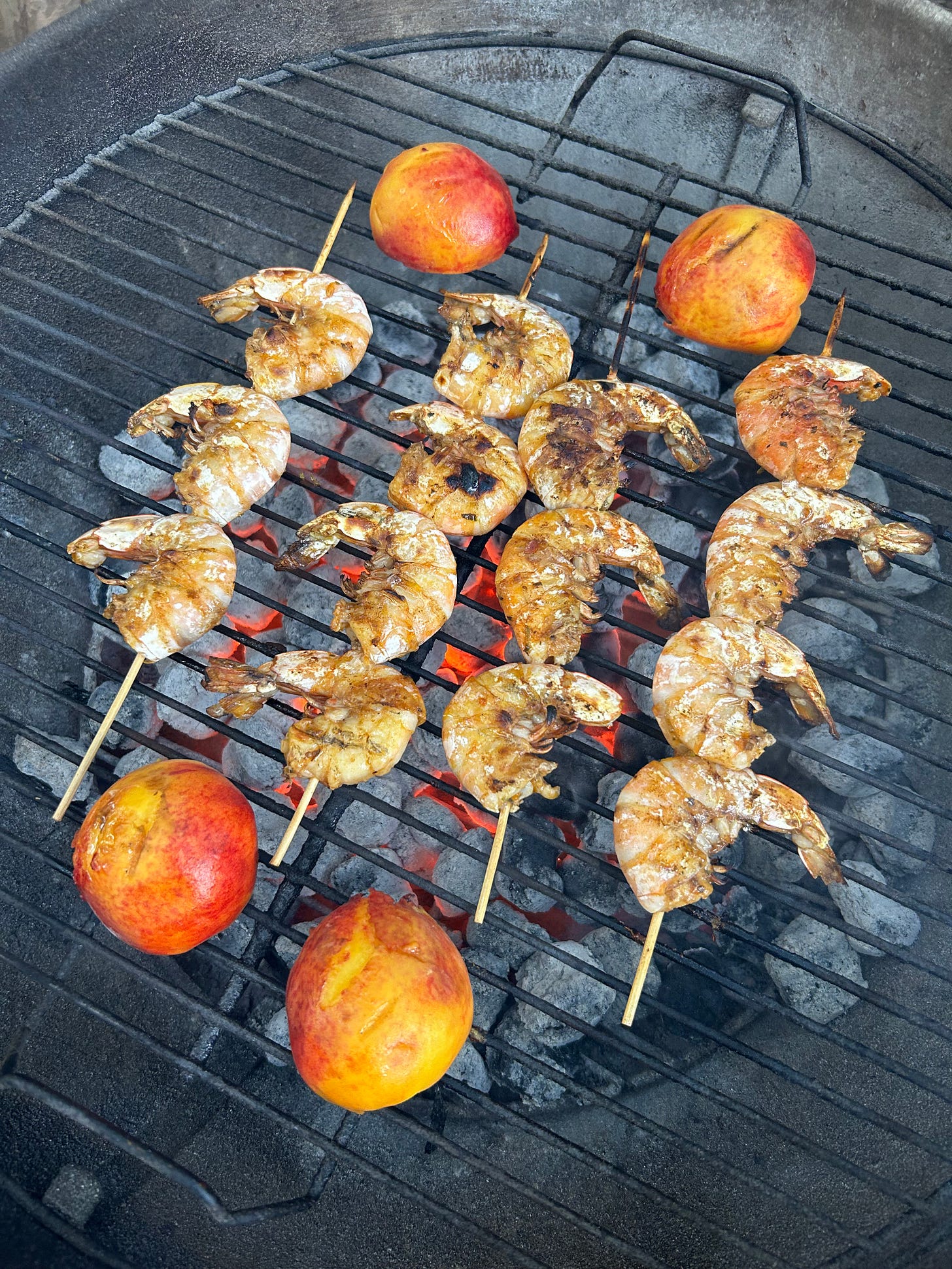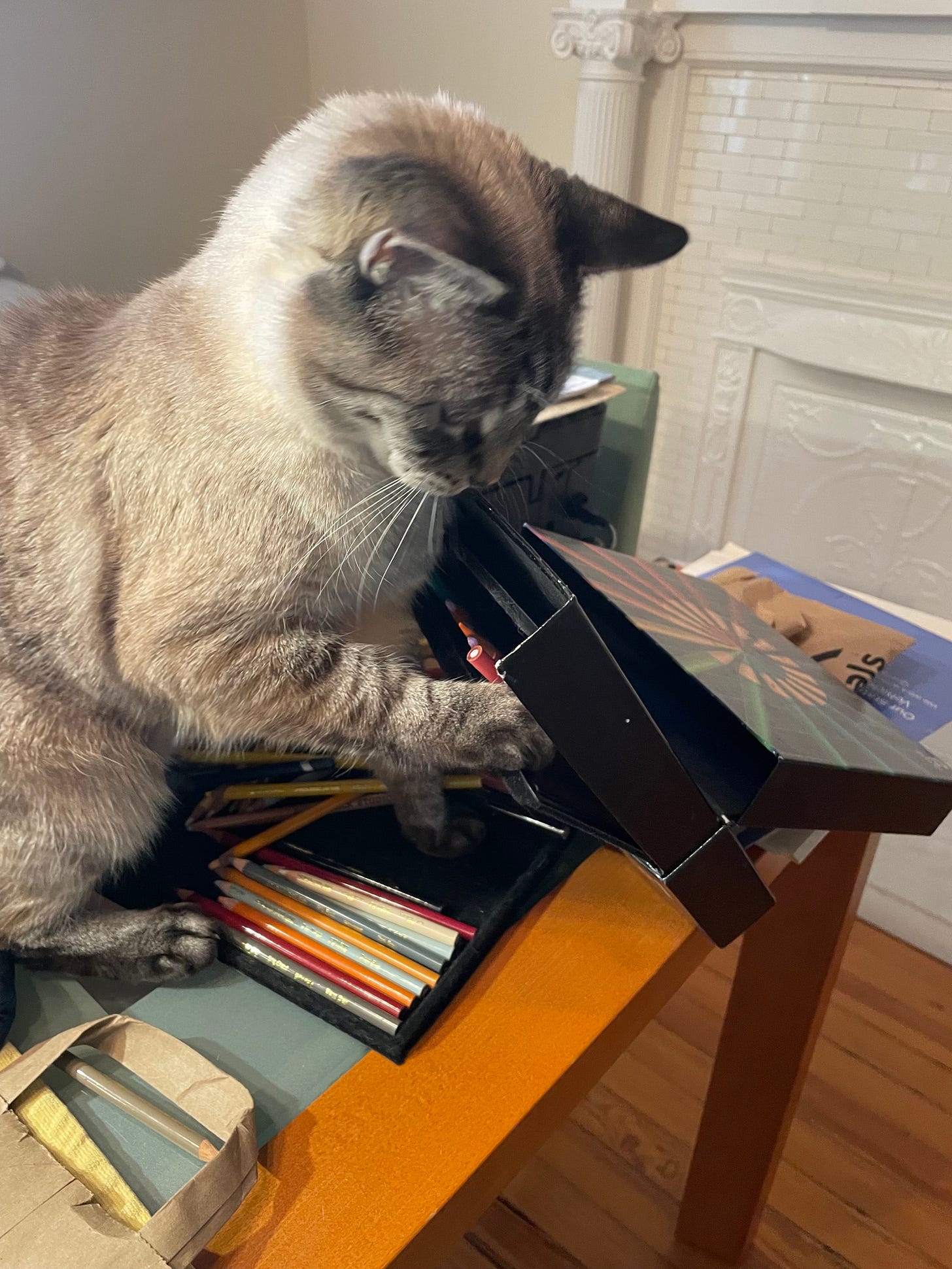Grilled Shrimp & Grilled Peach Salsa
With summer comes grilling season, and, yes, you can grill fruit!

When summer arrives, the urge to get outside is strong—so it’s a good time to fire up the grill! Grilling is a method of cooking that is very friendly to those who need to avoid gluten, because it never involves breading.
The one thing you should look out for, though, is wheat in store-bought marinades and spice blends—always read the ingredient label before using one, because food processors love to sneak in some wheat flour to thicken their marinades. So that’s why, when you want to avoid gluten, it’s usually best to make your own marinades. They’re very simple to make—typically a few tablespoons of oil and a few dashes of your favorite seasonings is all you need (think crushed garlic, thyme, lemon zest, black pepper, salt, for example). Mix it all up and immerse your meat, seafood, or vegetables for an hour or so, and, voila, it’s ready to cook!
Another great thing about grilling is that you can grill pretty much any fresh produce, and—surprise!—that includes fruit. I’ve grilled peaches and pineapple, and today we’re going to use grilled peaches to make a slightly sweet salsa.
I improvised this recipe yesterday as I was cooking, so you may see places for improvement, and I’d encourage you to use this as a basic template to inspire your own creative spirit. Your protein doesn’t need to be shrimp either—this salsa would pair nicely with a variety of seafood, pork, or chicken.
For the recipe below, I had 14 wild-caught, shell-on shrimp (16 ounces total) that the package described as “extra jumbo” (see note1 and 2). I skewered them to make handling them on the grill easier.
So, without further ado, let’s light the fire and grill!
Ingredients for the marinade:
¼ cup oil (see note3)
½ teaspoon each of cumin, dried oregano, paprika
Zest of 1 lime (see note 4)
1 chili pepper, finely chopped
1 garlic clove, finely chopped
1 teaspoon coarse sea salt
Ingredients for the salsa:
2 firm peaches, cut in half, pit removed, brushed with oil, and grilled (see note5)
1 small red onion, grilled
2 scallions, grilled (optional, see note6)
2 jalapeno peppers, grilled
1 ripe tomato
1 bunch fresh cilantro
Juice of 1 lime
Sea salt to taste (I used about 1 teaspoon)

Directions:
Mix the marinade ingredients in a sealable container, add the shrimp, seal the container, toss the shrimp around until they are thoroughly coated, and set aside until ready to grill (see note7)
Light the grill and get it good and hot (see note8)
If using skewers, place 3 to 4 shrimp on each skewer and place them over direct heat
At the same time as the shrimp, place each peach half on the grill over direct heat (I started skin-side down); no need to cover the grill—the shrimp and peaches will cook quickly over high, direct heat
After about 3 minutes, flip the shrimp and peaches—they should show a bit of browning or charring—and cook several more minutes until done (see note9)
Grill the onion, scallions, and jalapenos until they start to show some brown edges or charring, removing them as they are done (the red onion will take longest)
Coarsely chop the peaches, tomato, jalapenos, red onion, and scallions and place them in a food processor with the lime juice, salt, and a handful of cilantro (about 10 sprigs, more or less to taste) and blend until finely chopped
Serve the shrimp with a bit of the salsa on the plate—but make sure there’s a big bowl of salsa on the side!

Cat update:

Is Seraphina a good kitty or a bad kitty? I like to say she’s a good kitty “most of the time”. The times when she is most annoying (bad kitty) is when she thinks it’s her lunchtime. That’s when she starts knocking thinks over, pushing them off of tables and shelves, and strolling across my computer keyboard while I’m working. I don’t want to encourage that behavior, so I usually wait for her to settle down a bit (lying down next to my computer, so I can’t miss her) before feeding her.
Shrimp can be purchased in a variety of forms—fresh or frozen, with the shell on or off, wild or farmed, small or large, Gulf or Argentinian, etc. For grilling, the two things that probably matter most are having a large-sized shrimp and having the shell on. The larger shrimp are easier to handle on a grill—they won’t fall through the gaps. If you have smaller shrimp, I would definitely skewer them so they stay together. If you don’t have skewers available for small shrimp, put a piece of aluminum foil over the flame and place the shrimp on the foil. Also, large shrimp will not dry out as fast as the smaller ones, so they stay juicy and retain their flavor. Avoiding dryness is also the reason I prefer shrimp with the shell on—the shells protect the flesh from the flames and hold in the juices and flavor. If you can find shrimp with the heads on as well, that’s even better!
Adjust the amount of marinade as required for the number of shrimp you’re cooking. With extra jumbo shrimp, about 6 per person may be enough, assuming you’re also grilling a bunch of vegetables to serve with them (I did mushrooms and asparagus).
I used unrefined coconut oil, because I like the flavor and thought it would go particularly well with the other ingredients. However, I’m not sure I’d recommend going that route, as unrefined coconut oil is solid (kind of like butter) at room temperature, so it can be tricky to work with. I had to warm it up to liquify it before adding my spices, and, when the cold shrimp hit it, the oil started to solidify again. So a better option might be avocado or grapeseed oil. Olive oil has its drawbacks when cooking with high heat, in that the flavor changes for the worse (think burning tires). And I always avoid using highly processed oils like canola or corn.
In case you’re not sure, zest is the fragrant green skin of the lime. The flavorful part is the thin green layer that coats the white part of the rind. You want to avoid having too much of the white part, which is bitter. So to maximize the green and minimize the white, I rub the lime across a microplane grater, which does a good job of giving very thin strips of the rind and releasing the lovely fragrance.
When choosing peaches for grilling, you want them to be just about ripe, but still firm. If they’re too ripe, they won’t hold together very well over the fire. Brushing them with a bit of oil will help stop them from sticking to the grill. The idea is to grill them just long enough to catch a grilled flavor and bring out the fruit’s natural sweetness, not cook them all of the way through, so when you notice that they have brown grill markings, go ahead and take them off the grill.
As I mentioned, I made up this recipe on the fly, so I’m not sure why I added the scallions, other than I had them in the fridge and it seemed like a good idea at the time. If they seem redundant with the red onion, you’re probably right, so you’ll get a very similar result by just using the red onion—or leaving out the onion and using more scallions.
How long should the shrimp marinate? I’d say a minimum of 30 minutes, but you can leave it for an hour or so. I’d give the same amount of time for any fish or shellfish, but would give more time for meat or poultry.
Gas or charcoal? That is the eternal grilling debate. I’ve always preferred grilling over a charcoal fire—maybe because that’s how my family did it when I was growing up. I think you get a better flavor with charcoal, but the flip side is that it is more labor intensive and messier than gas. I have plenty of friends and family members who grill with gas, and they get very good results. Either way, get out and grill!
When are shrimp done? When they turn pink. They will also curl into a tighter circle as they cook. The amount of time you need to cook them will depend on the size and the temperature of your fire, but please do not overcook them. If you think they’re done, they’re done; don’t leave them on longer. Overcooked shrimp get stringy and dry. We want a smooth texture that is easy to chew, so I’d rather err on the side of undercooking than overcooking. Remember too that when you remove something from the grill, the food itself is still hot and will continue to cook even off of direct heat.



